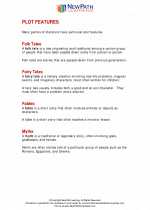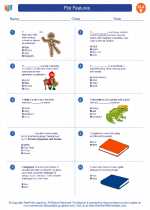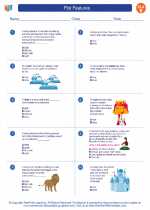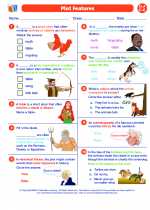Plot Features
In literature, the plot is the sequence of events that make up a story. Understanding the key features of a plot is essential for comprehending and analyzing a story. The main elements of a plot include exposition, rising action, climax, falling action, and resolution. Let's explore each of these features in detail:
1. Exposition
The exposition is the beginning of the story where the characters, setting, and main conflict are introduced. This part of the plot provides essential background information and sets the stage for the events to come.
2. Rising Action
The rising action is the series of events that build tension and develop the conflict. During this phase, the main characters face challenges, obstacles, and complications that propel the story forward and create anticipation for the climax.
3. Climax
The climax is the turning point of the story, where the tension reaches its peak and the most significant event occurs. It is the moment of greatest emotional intensity and often leads to a change in the characters or their circumstances.
4. Falling Action
Following the climax, the falling action shows the consequences of the climax and begins to resolve the conflict. Loose ends are tied up, and the story moves towards its conclusion.
5. Resolution
The resolution, also known as the denouement, is the final outcome of the story. It provides closure and reveals the final destiny of the characters or the outcome of the main conflict. It concludes the story and gives the reader a sense of fulfillment.
Study Guide
To master the understanding of plot features, here are some key points to consider:
- Identify the exposition in a story. What important information about the characters and setting is presented in this section?
- Analyze the rising action. How do the events in this phase contribute to the development of the main conflict?
- Examine the climax. What event marks the turning point of the story, and how does it impact the characters and the plot?
- Consider the falling action. What happens after the climax, and how does it lead to the resolution?
- Reflect on the resolution. What final outcomes or conclusions are revealed, and how do they bring the story to a close?
By paying attention to these elements and engaging with the plot features in various stories, you can deepen your understanding of how authors construct and resolve narratives.
Remember, the plot is the backbone of a story, and recognizing its features is crucial for comprehending the overall structure and impact of a literary work.
[Plot Features] Related Worksheets and Study Guides:
.◂English Language Arts Worksheets and Study Guides Fifth Grade. Plot Features

 Worksheet/Answer key
Worksheet/Answer key
 Worksheet/Answer key
Worksheet/Answer key
 Worksheet/Answer key
Worksheet/Answer key
 Worksheet/Answer key
Worksheet/Answer key
 Worksheet/Answer key
Worksheet/Answer key
 Worksheet/Answer key
Worksheet/Answer key
